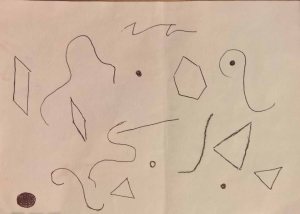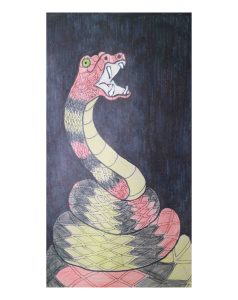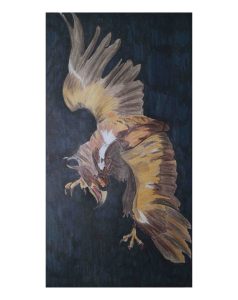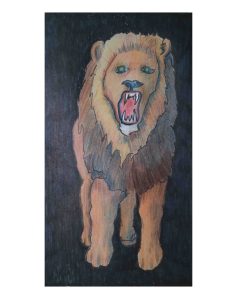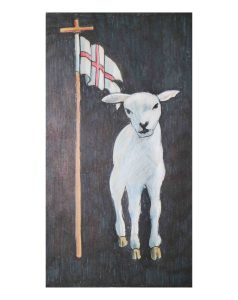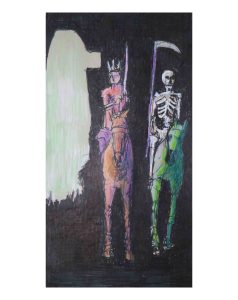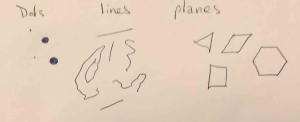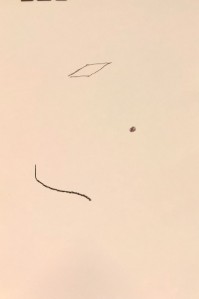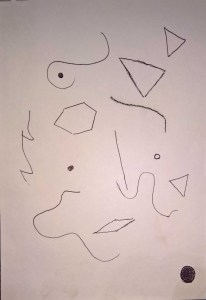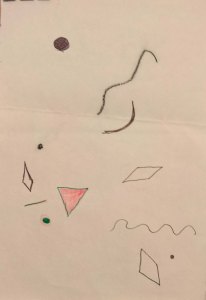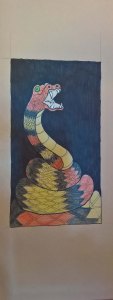Dearest Cleo
I hope you are well and having fun in the hot weather, I won’t see you this weekend because I am going to see Nana Bet, I will give her your best regards and I expect it won’t be too long before she comes down to see you anyway.
At the monastery that is Sutherland Villa’s things are going better than expected, yesterday and today I have completed two further plates for the book, despite working hard for the squire all day. I am a little bit worried about the first one in that it lives fully formed in my head, at first I was unsure about this, but I reconciled it with the fact that we all have our demons. Not you perhaps, because you are yet youthful, but prepare yourself well for this one and listen to him not, I was feeling so wise there that into Yoda mode I slipped.

Figure 1 (5,2,9.1) The seven headed ten horned beast, Sharpie, graphite and coloured pencil on A2 grey sugar paper
The second plate is even more scary, but in a rather different way, I was reading Rubens Drawings and Sketches which is a catalogue of an exhibition that took place in the late seventies in the British Museum when I found my eagle. I have made sketches of eagles for this project but they have all been in landscape format, which would not suit the format of the book.
The eagle in question was originally attributed to Rubens but experts have now declared that the drawing and the painted version in Prometheus Bound were carried out by Ruben’s pupil Frans Snyders.
I have read Steal like an Artist and I recently visited the exhibition Art in the Making in Copenhagen the crux of which was that artists stole from each other’s compositions and sketches so I stole Snyder’s eagle without feeling too much compunction preferring to describe it as collaboration rather than theft, after all, the research was done by me and me alone in this monastery.
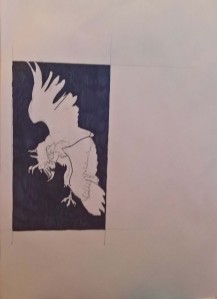
Figure 2 (5,2,9.2) Eagle, Sharpie, graphite on A2 grey sugar paper

Figure 3 (5,2,9.3) Eagle, Sharpie, graphite and coloured pencil on A2 grey sugar paper
Ok so none of that seems scary, but here is the totally scary bit, a copy of a drawing by a pupil of Rubens seems to fit seamlessly into my current series. I can appreciate that I have incorporated some my own voice into the copy, but leave it alone, had I but an eagle in a cage, it would have been Gissa job Rubens, I can do that, or am I three decades and four hundred years too late?
Anyway my dear that is four of the ten complete, maybe in another week I will be ready to talk to the printer.
My love as always
Mickos xx
